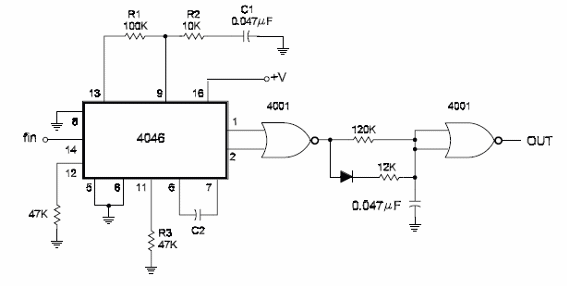The basic application for a 4086 PLL is as a tone detection The circuit can be selected to function in two modes - with high or low selectivity. Suitable applications are in the rate between a 1nw hertz and more than 2 MHz. The circuit of a tone detector using the 4088 is shown here. This circuit can recognize tones in a narrow frequency band. When a tone is recognized, the circuit Iocks and a control pulse is available in the outputs. In this case, the circuit has two outputs with symmetrical signals when Iocked. This symmetry can be detected by a Iogic gate sourced to the output after a filter [command pulse]. The Ioop filter which determines the characteristics of the PLL, is formed by R1, R2, and C1. C1 and R1 determine the setting time; the ratio of R1 to R2 determines the damping factor RB and 02 determine the maximum VCO frequency, and the minimum is given by R1, R2 and CB The values shown in the diagram are typical for a detection of a 4 kHz tone.




